My Conclusion
What I’m taking away from this episode is;
- Caffeine prevents adenosine from its natural action of making us sleepy.
- Get up each morning and get outside, anywhere from 2-10 minutes of sunlight exposure.
- Viewing an hour or so of sunset, anywhere from 2 to 10 minutes, prevents some of the harmful effects of light.
- You want as little light coming into your eyes, artificial or sunlight, after 8:00 p.m., May use blue blockers.
- You do not want to get bright light exposure to your eyes between 11 p.m. and 4 a.m.
- Red light won’t trigger this pathway or floor lights, candlelight, and fireplaces.
- Get that light exposure and exercise early in the day.
- Stop eating around 6:00 or 8:00 p.m.
- Restrict your feeding to 4 hours, 8 hours or 16 hours.
- Control your sleep environment with a proper sleep surface, a suitable pillow, the temperature in the room, light exposure, and exercise regularly throughout the day and week.
- Naps can be very beneficial if they are less than one ultra radian cycle, 20-30 minutes or even an hour. Around 2-4 o’clock in the afternoon. Other practices are Meditation, Yoga-Nidra and Hipnosis.
- Magnesium Threonate and theanine help with sleep, but they can make them so sleepy and sleep so deeply that they have trouble waking in the morning.
- Apigenin, a chamomile derivative, can also support sleepiness to help fall asleep and stay asleep.
Introduction
We will talk about how to get better at sleeping, falling asleep, timing your sleep, and accessing better sleep quality. In doing so, we’re also going to discuss how to get more focused and alert in wakefulness, so because sleep and wakefulness are related, we can’t have a conversation about one without the other.
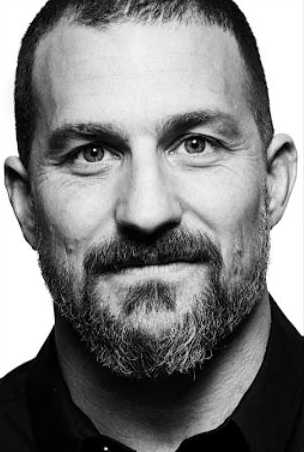

Sleep is this incredible period of our lives where we are not conscious. We might dream, twitch, or even wake up, but we are only concerned about things happening within our brain and body in sleep. Sleep is tremendously important because it resets our ability to be focused, alert and emotionally stable in the wakeful period, so we can’t talk about wakefulness, focus, motivation, mood, or well-being without thinking about sleeping. We also can’t talk about sleep without thinking about wakefulness because it turns out that the period that we call sleep and the period we call wakefulness are tethered to one another. What we do in the waking state determines when we fall asleep, how quickly we fall asleep, whether or not we stay asleep, and how we feel when we wake up the next day. There’s a lot of information about the biology of sleep, and most people know that consistently getting an excellent night’s sleep is essential. Still, most people don’t know how to fall asleep, sleep better, and emerge from sleep feeling more rested.
Sleep hunger
What determines how well we sleep and the quality of our wakeful state? Two forces govern it; the first is called adenosine. Adenosine is a molecule that builds up the longer we are awake; if you’ve slept deep and restful, adenosine is very low. If you’ve been awake for ten or more hours, the adenosine levels will be much higher. Adenosine creates sleep hunger, like nutrition. How well you feel after you eat certain foods, the overall level of fitness, cellular health and heart health aren’t governed by any one food item that you might eat or not eat; several different factors govern it, how often, how much, what you eat and what works best for you. In the same way, your sleep and wakefulness are the product of the average number of different behaviours; how long you’ve been awake is a key one because of this molecule, adenosine. You get sleepy when awake for a while because adenosine creeps up steadily.


Caffeine
Caffeine wakes you up, and it makes you feel more alert. Some people are so sensitive to caffeine that they feel jittery even in small amounts; others can drink large amounts and not feel jittery at all. Caffeine acts as an adenosine antagonist; it binds to the adenosine receptor, and nothing happens downstream of that receptor; it can’t engage the normal cellular functions of making that cell, and you feel sleepy. When the caffeine wears off, adenosine will bind to that receptor with even greater affinity, and you feel the crash and especially tired. You need to find out what’s right for you. Caffeine has a lot of health benefits or can be problematic for health. It can raise blood pressure and increase epinephrine, which is made from dopamine and gives us energy. The only way to decide whether caffeine is a good or a bad thing for you is to experiment with caffeine in a way that’s safe for you, figure out what works for you, and stick with that.
Timing your sleep properly
If you’ve ever pulled an all-nighter, you’ll notice something interesting: as morning rolls around, you’ll suddenly feel an increase in your energy and alertness again, even though adenosine has been building up for the entire night. Now, why is that? The second force that governs when you sleep and awake is called the circadian force. Circadian means about a day or about 24 hours, and inside all of us is a clock that exists in the brain that determines when we want to be sleepy and when we want to be awake. Our period of sleepiness is condensed into a 6-10 hour block. The most potent thing that governs when you want to be asleep and awake is light, particularly sunlight.
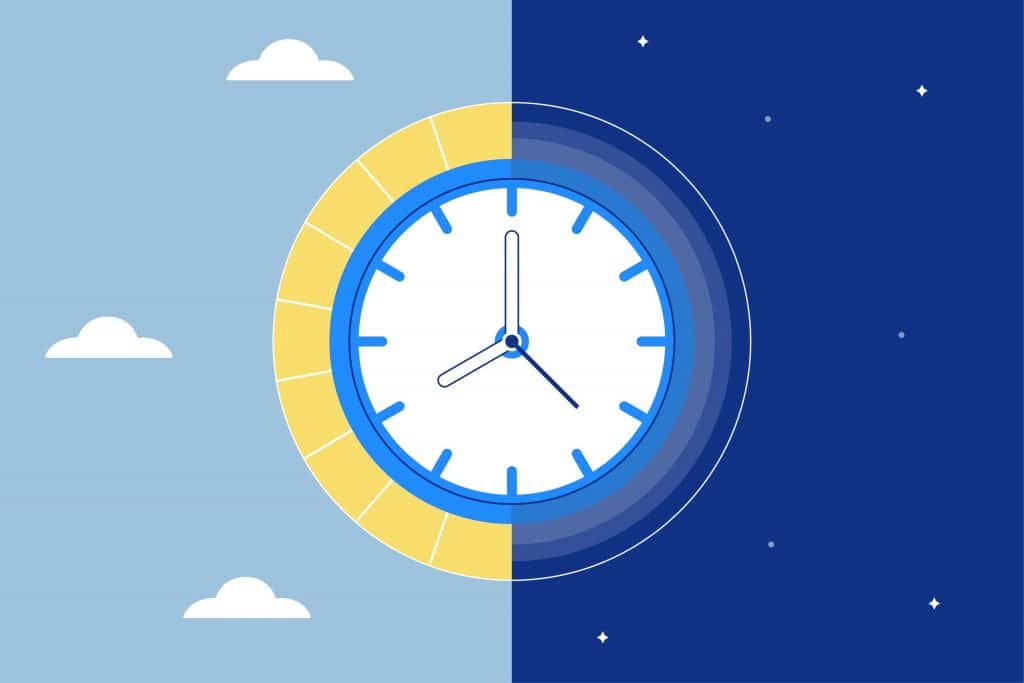
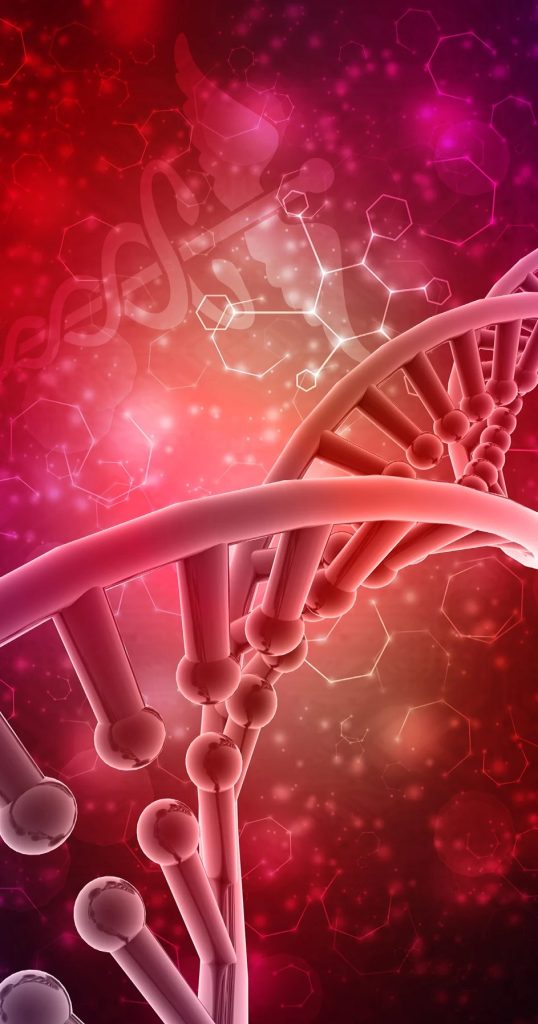
Release of hormones
We tend to wake up within about an hour or two before the sun rises, and adenosine levels are low, and our system generates an internal signal that is in the form of a hormone. A hormone is a chemical released from one organ in your body that goes and acts on other organs elsewhere, including your nervous system. In the morning, we wake up because a particular hormone called cortisol is released from your adrenal glands, which sit right above your kidneys. There’s also a pulse of epinephrine and adrenaline from your adrenals and in your brain, and you feel awake. This might come from your alarm clock, or you naturally wake up. It alerts your whole system in your body that it’s time to increase your heart rate, it’s time to start tensing your muscles, it’s time to start moving about. This must come early in the day, as it sets a rising tide of cortisol in your system. Different stressors and events make us more alert throughout our lives. Some might be looking at your credit card bill or phone, or you’re running late. These will increase norepinephrine, epinephrine and adrenaline in your system. If severe enough, pulses of cortisol will be released from your adrenals. Still, there’s this normal, healthy rising tide of cortisol that happens early in the day that makes you feel alert, able and want to move for exercise, school and social relations. When the cortisol pulse takes off, a timer in your body and your nervous system dictates when melatonin, which makes you sleepy, will be secreted from a particular brain region.
Melatonin
When you wake up in the morning and experience that rise in cortisol, a timer starts, and in about 12 to 14 hours, melatonin will be released from your pineal gland. There are two mechanisms: a wakefulness signal that triggers the sleepiness signal timer. The only natural source of melatonin in your body is the pineal gland. It’s a gland in the little structure near the fourth ventricle, about the size of a pea. It’s one of the few structures in the human brain that there’s only one of them because in most structures, there’s one on either side of the brain, called bihemispheric, but with the pineal, there’s only one. Melatonin has a second function; it also suppresses the onset of puberty.
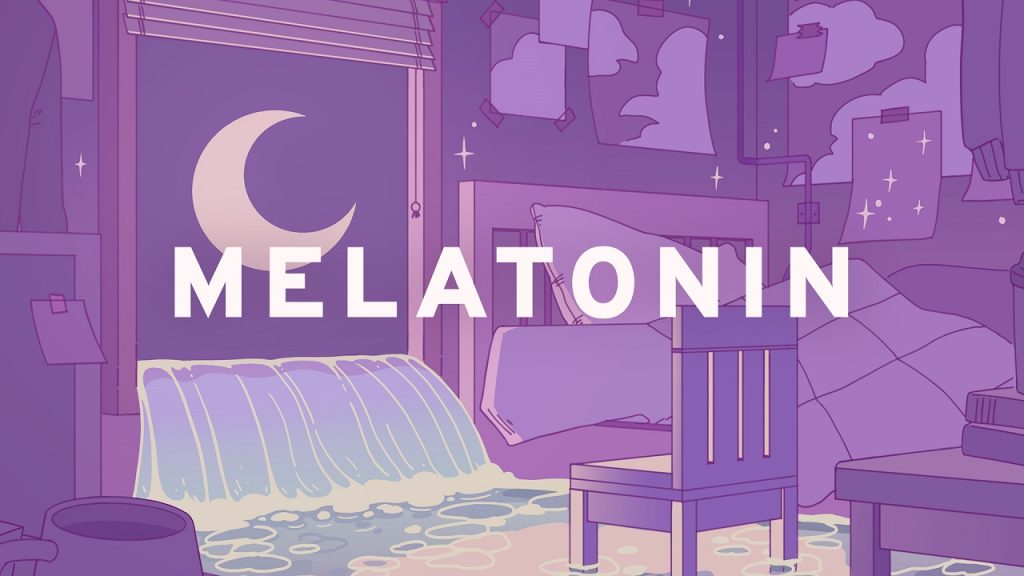
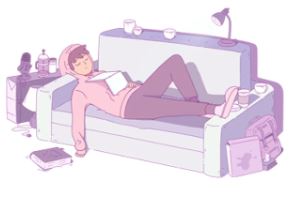
In kids, and especially in babies, melatonin isn’t just released in the evening 12 to 16 hours after we wake; melatonin is released chronically or tonically throughout the day and night, and that chronic or tonic release of melatonin is known to suppress one of the other hormones in other regions of the brain that trigger the onset of puberty. Regular, cyclic, cycled periods of melatonin release from the pineal correlate with the onset of puberty and early adulthood, meaning as we start secreting melatonin only at night, that’s also when we tend to transition out of puberty.
Another point is that melatonin will help you fall asleep, but it won’t help you stay asleep, and many people who take melatonin find that they wake up three to five hours later, unable to fall back asleep. Part of the reason for that might be that melatonin purchased commercially, the amount of melatonin has been tested for various brands. It can range anywhere from 15% of what’s listed on the bottle (if they list this as 100 milligrams, there are only 16 milligrams) to up to 400 times more than what’s listed on the bottle. The rhythm of cortisol and melatonin is endogenous; it’s always happening in us without external input. If we were in complete darkness, living in a cave with no artificial lights whatsoever, or we were in complete brightness where we never experienced any darkness, these rhythms of cortisol and melatonin would continue, you would have a pulse in cortisol, that would drop off with time, and then melatonin would come up about 12-14 hour later. Still, the endogenous systems of our body, which are both hormonal and neural, were set so that external things could govern when they happen.


Strange vision is good vision.
One sensory event influences when the cortisol will rise when you wake up. You open your eyes, and light comes into your eyes. This system works with a particular set of neurons in the eye called retinal ganglion cells, which are brain neurons that reside outside the skull. When light comes into the eye, there’s a particular type of retinal ganglion cells that perceive a specific kind of light and send an electrical signal to this clock that resides above the roof of your mouth, the suprachiasmatic nucleus. It has connections with essentially every cell and organ of your body. Based on a lot of evidence, if you don’t get your cortisol and melatonin rhythms right, there are harmful effects on cardiovascular health, dementia, metabolic effects, learning, and depression.
We’ve been bombarded with all this information about how we’re not sleeping well, sleeping at the correct times, or sleeping enough, to the point where people now have sleep anxiety. What can we do to anchor these systems properly? Why won’t any light do it? These neurons in our eye that set the circadian clock respond best to a particular quality of light and amount of light, which are the qualities of light that come from sunlight. What they’re looking for is the sun at a low solar angle. A particular contrast between yellows and blues triggers the activation of these cells. Will these cells be activated if you wake up, look at your phone or computer, or flip on artificial lights? And the answer is they’ll be activated but not optimally. You want sunlight in your eyes as close to waking as possible. They respond best to the quality and amount of light that comes in when the sun is low in the sky; that means if you can watch the sunrise, that’s perfect for triggering the activation of these cells. If you wake up a few hours after sunrise, you still want to get outside and view sunlight, and you don’t need the sunlight beaming you directly in the eyes; many photons are scattered from sunlight at this time. Dr. Jamis Zeitzer, who’s the Department of Psychiatry and Behavioral Sciences at Stanford, says that it’s 50 times less effective to view this sunlight through a window, through a car windshield, or the side window of a car than it is to get outside with no sunglasses and view light early in the day.


Once the sun is overhead, the quality of light shifts and you miss this opportunity to time the cortisol pulse. A late-shifted cortisol pulse increases cortisol is one of the consequences, and maybe one of the causes of anxiety disorders and depression, so it’s a chicken-egg thing; we don’t know whether or not it’s correlated with the cause or the effect, but it’s a signature of depression and anxiety disorder. Bringing that cortisol pulse earlier in your day has positive benefits ranging from blood pressure to mental health; there are so many.
So how long should you be outside? In environments where it probably only takes 30-60 seconds, whereas if you’re in the depths of winter and you wake up at 5 am, and the sun is just creeping across the horizon and then goes back down a few hours later, you probably are not getting enough sunlight to set these rhythms. You may need to use sunlight simulators in the form of particular lights designed to simulate sunlight, or you can go outside for longer.
Even if there’s a lot of dense cloud cover, you’re probably getting anywhere from 10,000 to 50,000 lux, which is just a measure of light energy and should be sufficient to set the circadian clock. It turns out that early in the day, your retina is not sensitive, which means you need a lot of photons, ideally coming from sunlight, to set these clock mechanisms, so looking at your phone or artificial lights is fine if you wake up before sunrise. Still, it’s not going to work to set these clock mechanisms. Blue and yellow light coming from sunlight is ideal; if you can’t, you will want an artificial light that either simulates sunlight or has a lot of blue light.
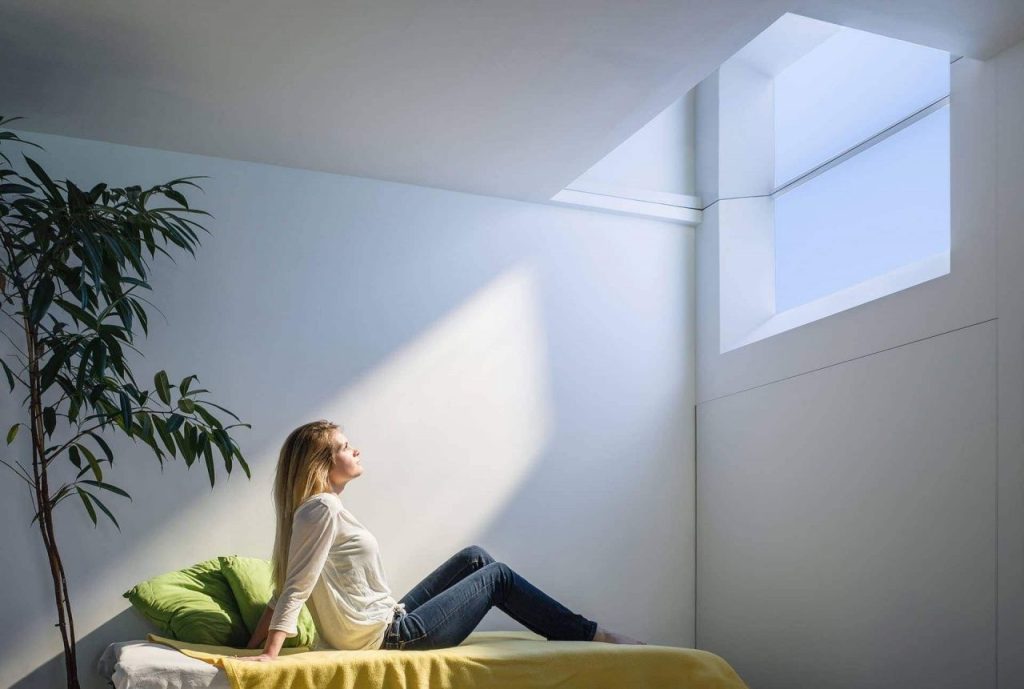
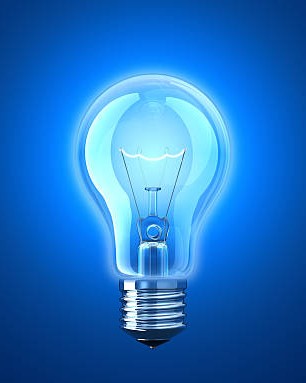
Blue light is excellent.
Blue light is excellent for this mechanism during the day. Never look at any light, sunlight or artificial light; that is painful. If your eyes are watering or having challenges maintaining because it’s painful, that light is too bright, and you don’t want to gaze at the sun, refusing to blink and burn it in your retina. You have a blink reflex; if you need to blink, there is too much light. If you’re going to, use artificial light rich in blue and blue wavelengths for setting this mechanism. Blue blockers should be reserved for late evening because light suppresses melatonin. Melatonin can be considered a sleepiness signal correlated with darkness, so get up each morning and get outside; anywhere from 2-10 minutes of sunlight exposure will work well for most people, and you want to do this regularly. You don’t have to do it precisely at sunrise. Suppose you can’t do it every day, or you sleep through this period of low solar angle; don’t worry about it. In that case, these systems in the body operate by averaging when you view the brightest light.
The problem with smartphones.
Now, that can immediately tell us that what most people do is terrible: they’re waking up, looking at their phone, which isn’t triggering activation of these cells, then they might get in a car with sunglasses and drive. Never compromise safety for the sorts of things I’m talking about, so if you need to wear sunglasses for safety reasons, wear them if you wear prescription lenses or contacts, wear them; they won’t filter out the wavelengths of light that are necessary for setting these central clocks, so safety first, if you have a retinal degenerative disorder, retinitis pigmentosa, macular degeneration, or glaucoma, or those run in your family, you want to avoid bright light all the time, you’re going to wanna get your light exposure through seeing dimmer light, including sunlight, but for more extended periods of times.
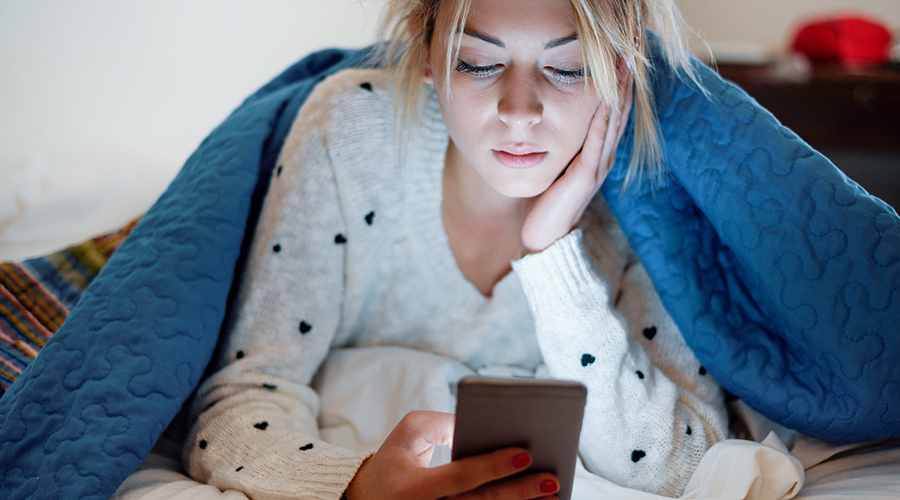
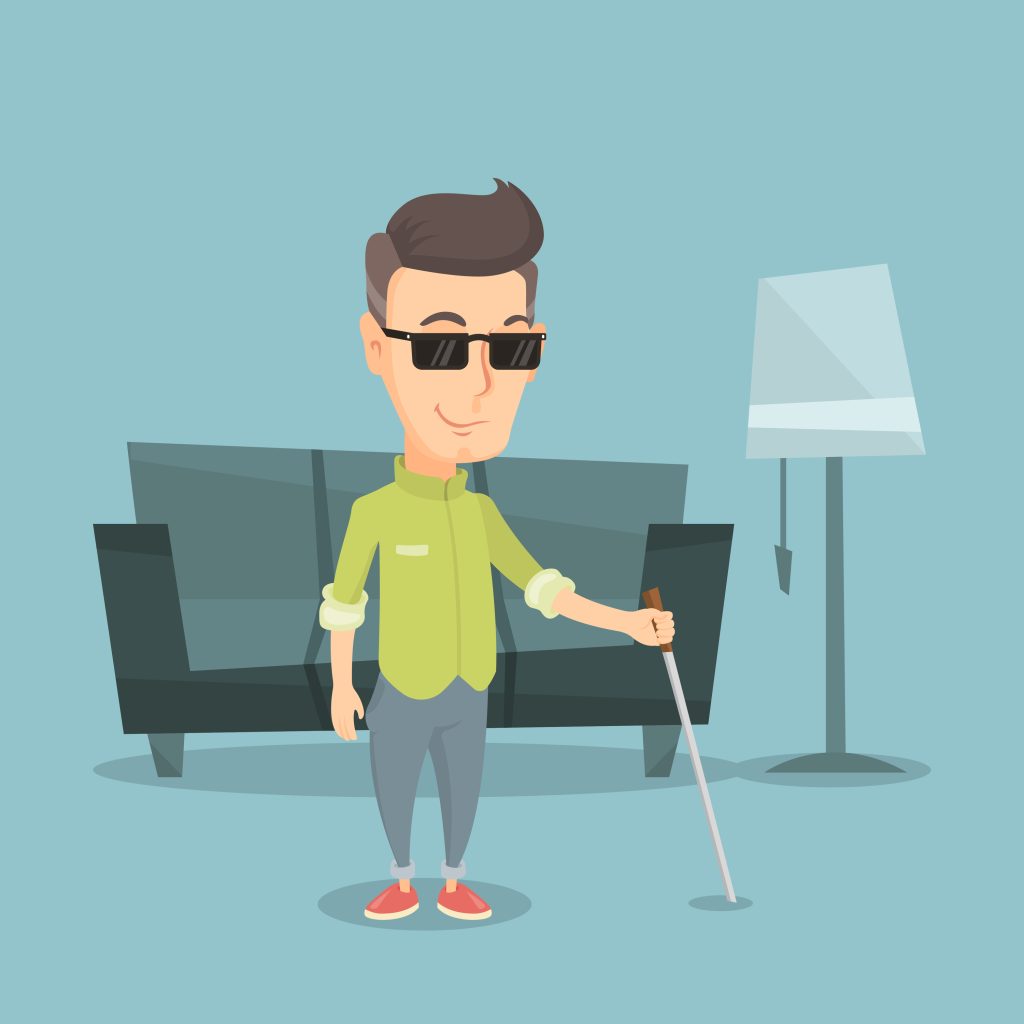
Blind / Low-vision people
Blind people, provided they maintain these melanopsin ganglion cells, set their central clocks by getting activated by the particular wavelengths of light present in the atmosphere, even coming through cloud cover. It’s not about ‘seeing’ the sun; this is a subconscious mechanism. Viewing sunlight early in the day is critical for healthy sleep-wake rhythms and allowing you to fall asleep easily at night. Now, it’s not going to ensure that all that happens every single time, but it is the foundation of proper sleep and circadian health.
What else can help set this rhythm?
It’s fair to say that light viewed by these melanopsin cells, particularly sunlight, is 1,000 to 10,000 times more effective than getting up in darkness and exercising. However, there’s another structure called the intergeniculate leaflet, which sits a few millimetres away in the brain, and it’s involved in regulating the clock output through what’s called non-photic, non-light-type influences like the timing of food intake, exercise, and various chemicals that one might ingest. If you want to become an early riser and you want to feel more awake during the early part of the day, get that light exposure and exercise early in the day; after two or three days, you will naturally start to wake up earlier and earlier in the day, and that’s because these clock mechanisms have shifted, it’s like setting the clock earlier as opposed to delaying the clock. So what sets the clock and keeps it anchored?


The power of Sunset.
The main thing is when the sun is also at a low solar angle, close to the horizon at the end of the day. Viewing sunlight at that time of day signals the central circadian clock that it’s the end of the day. Viewing sunlight around an hour or so of sunset prevents some of the harmful effects of light in preventing melatonin release later that same night. Suppose you can safely
do that with sunglasses off, anywhere from 2 to 10 minutes. Having those two signals arriving at your clock, your internal world knows when it’s morning and evening. Maybe think of it this way: every cell in your body needs glucose and energy, whether or not it’s from meats or ketones or carbohydrates or fruit or vegetables, it doesn’t matter; you put it in your mouth, it goes into your stomach, it’s digested, and then that resource is distributed to all the cells of your body. Every cell in your body needs oxygen. You inhale air, and it’s then distributed via the lungs to the cells through your bloodstream and then distributed to all body organs. Every cell in your body needs light information, and the way to get that information to all those cells is by viewing sunlight with your eyes at these two times of day. That’s the only route. You’ll know you’ve had enough exposure because your rhythm will start to fall into some degree of normalcy, you’ll start to wake up at the same time each day, and you’ll fall asleep more easily at night; it can take about two to three days, but they can have tremendous benefits on several different mental and physical aspects of your health.
Bad light.
We have access to light at times of day and night that we usually wouldn’t. The longer you’ve been awake, the more sensitive those cells are to light so that if you’ve been awake for 10-14 hours, it becomes easy for a small amount of light coming from a screen or an overhead light to trigger the activation of the clock and make it harder to fall asleep and disrupt your pattern. You want as much light as possible early in the morning and throughout the day. You want as little light coming into your eyes, artificial or sunlight, after 8:00 p.m., and you do not want to get bright light exposure to your eyes between 11 p.m. and 4 a.m. The light that arrives in the eyes between 11 pm and 4 am suppresses the release of dopamine, and it’s an endogenous antidepressant and can inhibit learning and create all sorts of other detrimental effects; it signals to a structure called the habenula, it looks like two little bar ears sitting right in the middle of a system in the brain called the thalamus when that habenula gets activated it’s actually called the disappointment nucleus because it actually makes us feel less happy and more disappointed, and can lead to certain forms of depression, in the wakeful state. If you think about our lifestyle, being up late looking at phones, even if you dim that screen, you’re triggering this activation because the sensitivity of these neurons has gone up late in the day. Red light won’t trigger this pathway or floor lights.

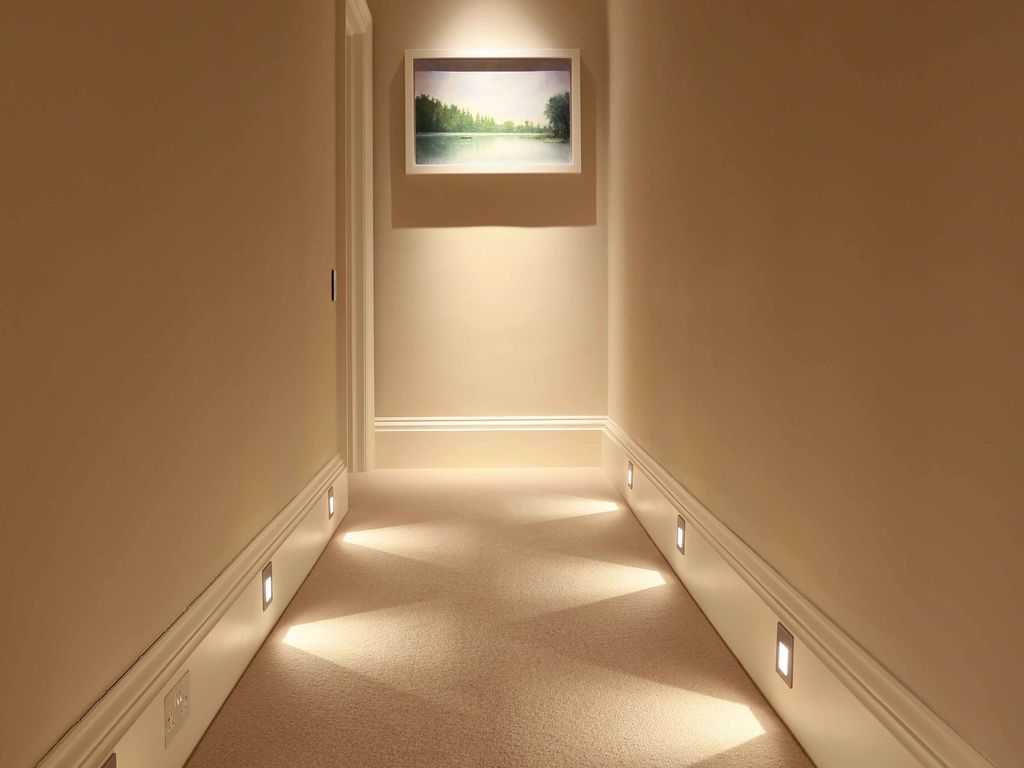
Light location.
We have a lens in front of our retina, and because of lens optics, these cells are viewing our upper visual field; there’s an inversion of the visual image. These cells are in the bottom half of your retina, viewing the overhead visual space around you. These cells were essentially designed to detect sunlight, which is overhead, so it’s better to place lights that you use in the evening low in your physical environment. Dim lights that are set low in the room are going to be best.
Fire and Candlelight.
Candlelight and fireplaces do not trigger activation of these cells; dim lights and keep lights low in your environment.
When to eat.
There are other things downstream of cortisol and melatonin. We tend to be hungrier during our wakeful period than late at night. If you’re finding that you can’t become a day or morning person, shifting your light exposure, exercise, and food intake to the daytime will help. Some people like to stop eating around 6:00 or 8:00 p.m. for metabolic reasons or to maintain or lose weight. The literature around nutrition essentially says that it’s best to restrict your feeding to a certain period of each 24-hour cycle and not to eat around the clock, whether 4 hours, 8 hours or 16 hours.

How to wake up earlier?
If you turn on the lights 45 minutes to an hour before waking up, even if your eyelids are closed, provided you’re not under the covers, it increases your total sleep time and shifts forward the time at which you feel sleepy, it makes you want to go to be earlier each night. You could put your lights on a timer to go on. We have the capacity for “phase advances” and “phase delays”. If you see light late in the day, particularly in the middle of the night, your brain and body will think that it’s morning light because of heightened sensitivity. It will phase delay your clock, making you want to get up and go to sleep later. It’s going to make it hard to want to wake up that next morning early and go to bed early. The opposite is true; if you wake up early, 6-7 or 4 a.m. and get light exposure, it will phase advance your clock, make your clock think it’s earlier so the simple way to think about this is if you’re having trouble waking up early and feeling alert early in the day, you’re going to wanna try and get bright light exposure even before waking up because it’s sort of like turning the clock forward.
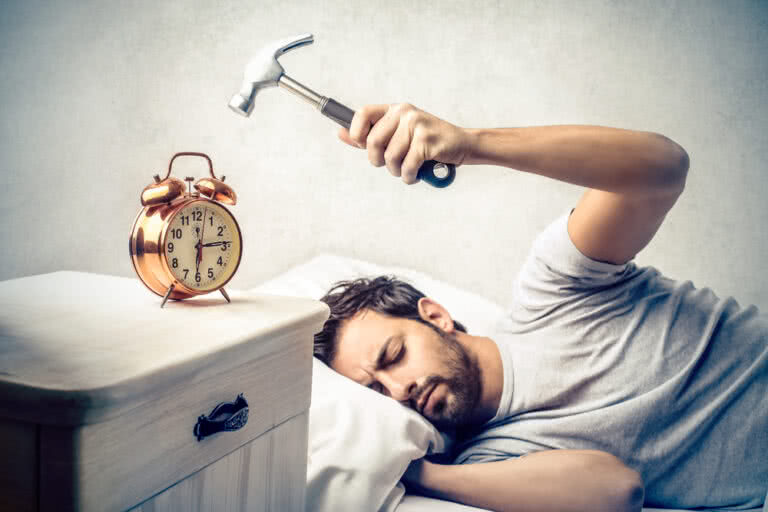
There are these internal mechanisms of adenosine and circadian clock. They’re continually operating, and you’re trying to provide them with consistent, powerful anchors so that your cortisol, melatonin, and everything that cascades down from that, like your metabolism, sense of alertness, dopamine, serotonin and your ability to learn. Most of us are familiar with what it is like not to sleep well, along with the terrible effects. Still, most people are not familiar with what it is to sleep well consistently, and when you start doing that by controlling your sleep environment, proper sleep surface, suitable pillow, the temperature in the room, light exposure, exercise at regular times throughout the day and week; it’s incredible how many other biological systems naturally fall in line.
Naps.
Naps can be very beneficial if they are less than one ultra radian cycle, 20-30 minutes or even an hour. You don’t have to take them, but many people naturally feel a dip in energy late in the afternoon. Your cortisol goes up, people will start feeling awake during the morning, and then around 2-4 o’clock in the afternoon, there’s a spike in everything from alertness to the ability to learn, and some metabolic factors drop. It naturally comes back up, and then it tapers off as the night goes on. Some people wake up from naps feeling groggy, probably because they’re not sleeping as well as they should at night or as long, and they are dropping into rim, sleep or more profound forms of sleep in the daytime, then wake up and feel disorientated. Other people feel great after naps, so you have to evaluate for yourself. There’s also a practice that can be immensely beneficial, like napping and meditation, called yoga Nidra.
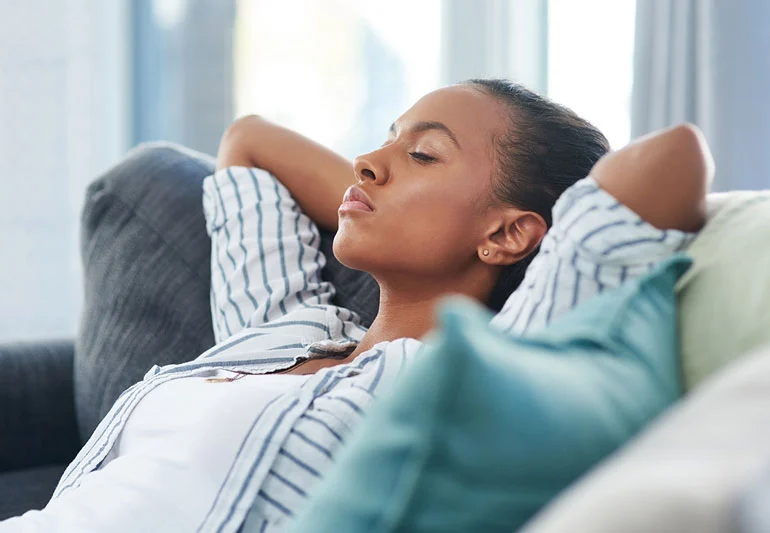
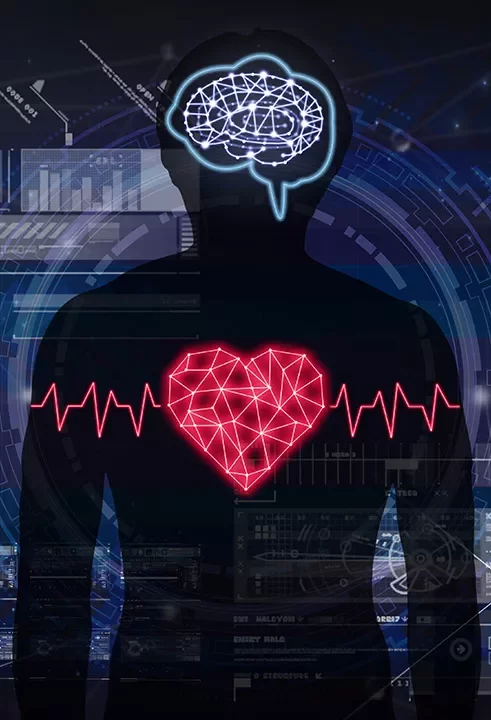
Using the body to control the mind.
Yoga Nidra means yoga sleep, and it’s a meditation you listen to; many scripts allow you to consciously bring your entire body and mind into a state of deep relaxation, and sometimes you fall asleep, and sometimes you don’t. This is done for 10 to 30 minutes or even 60 minutes at a time. Meditation also works really well. All three of those do something powerful; by bringing our mind into a state of less sympathetic nervous system activation, it activates cells and circuits in your body that promote the parasympathetic nervous system, or the calming system. Some people are not good at falling asleep because they’re not good at calming down; it’s challenging to disengage and fall asleep. Meditation and Yoga-Nidra scrips have been immensely helpful for accelerating the transition to sleep; it has you do some particular patterns of breathing and some other kinds of body scan-like things that can really help people learn to relax, not just in that moment but get better at relaxing and turning off thinking to fall asleep when they want to do that at night. Another thing that’s similar to this is certain forms of Hipnosis for sleep that essentially take the brain into a state of deep relaxation. Time each day you devote to getting better at falling asleep and staying asleep is an excellent practice to adopt. The other thing about practices like Meditation, Yoga-Nidra and Hipnosis is they are a suitable training mechanism by which you train your nervous system to go from a state of heightened alertness to heightened relaxation.
Möbius strip
It is tough to control the mind with the mind. When you have trouble falling asleep, you must look to some mechanism involving the body. Meditation, Hipnosis and Yoga-Nidra all involve exhaling, emphasised breathing, and specific ways of lying down and controlling the body rather than trying to wrestle your mind into a particular relaxation pattern. Use the Möbius strip relationship with the mind and body.

Drugs & Supplements
These could be prescription drugs or supplements; all compounds will affect some aspect of biology. You might not shift it perceptibly; you might not create problems for yourself, but any time you ingest a compound at high potency, you’re going to provide some shift to your circadian rhythm. Now, a couple of things are directly in line with the biology related to falling asleep and staying asleep and directly in line with the biology of wakefulness. There’s a whole category of things like stimulants, cocaine, amphetamine, and prescription stimulants specifically designed to treat narcolepsy, so stuff like modafinil or armodafinil are designed to create wakefulness. They are all essentially chemical variances of things that increase epinephrine and dopamine. Things like cocaine and amphetamine are just across-the-board bad. They have so many addictive and terrible effects. In the proper setting, stuff like modafinil for narcolepsy might be appropriate if prescribed by professionals. Still, it’s abusing the system because you’re pushing back on the adenosine system slightly differently than caffeine. It will make you more alert, but it tends to be a heavy rebound, and they have an addictive potential. When you’re doing all the right behaviours, you’re exercising and eating correctly. You’re still having trouble with sleep. What can be beneficial for falling asleep and staying asleep? The first one is magnesium.
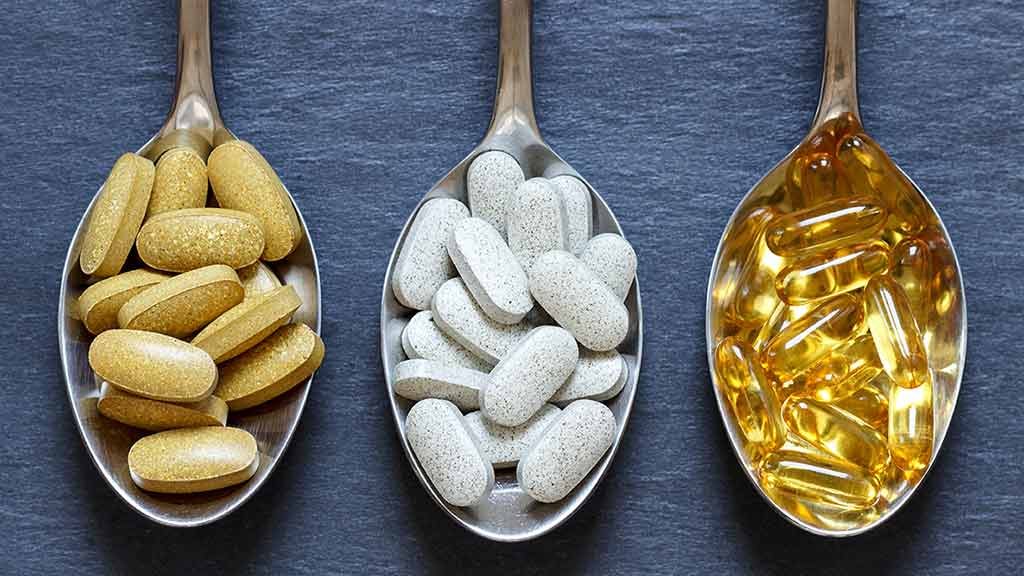
There are many forms of magnesium, but certain forms of magnesium can have positive effects on sleepiness and the ability to stay asleep, mainly by way of increasing neurotransmitters like GABA, which help turn off the thinking about the future and make one’s mind kind of drift in space and time and make it easier to fall asleep. Magnesium Threonate is associated with transporters in the body that bring more of it into cells, allowing people to feel this kind of drowsiness and helping them fall asleep. The other thing is Theanine, it is now being introduced to a lot of energy drinks to take away the jitters that are associated with drinking too much caffeine or with some other things that are in energy drinks. The thing about theanine and magnesium is that taken together, they do for some people; they can make them so sleepy and sleep so deeply that they actually have trouble waking in the morning, so you have to play with these things and titrate them if you decide to use them. If you choose this route, I would not start by taking supplements. I would start by getting your viewing behaviour correct, then think about your nutrition, then your activity, and then think about whether or not you want to supplement. There’s another supplement that could be useful, which is apigenin, which is a derivative of chamomile can also augment or support this kind of creation of sleepiness to help fall asleep and stay asleep.
Sleepwalking.
That was a lot of information about how to get better at sleeping, falling asleep, wakefulness, etc. We will dive deep into topics for several episodes at a time. There are probably many more questions that you still have, and episodes are coming up soon we are going to explore more.
helixsleep.com/huberman
Headspace.com
